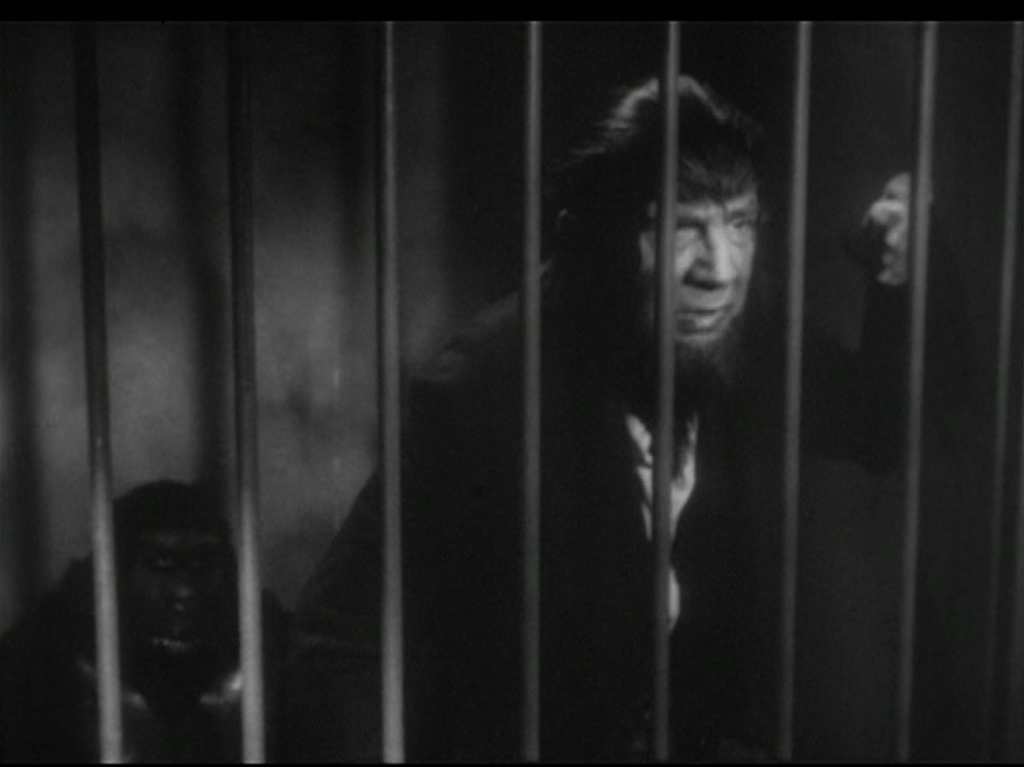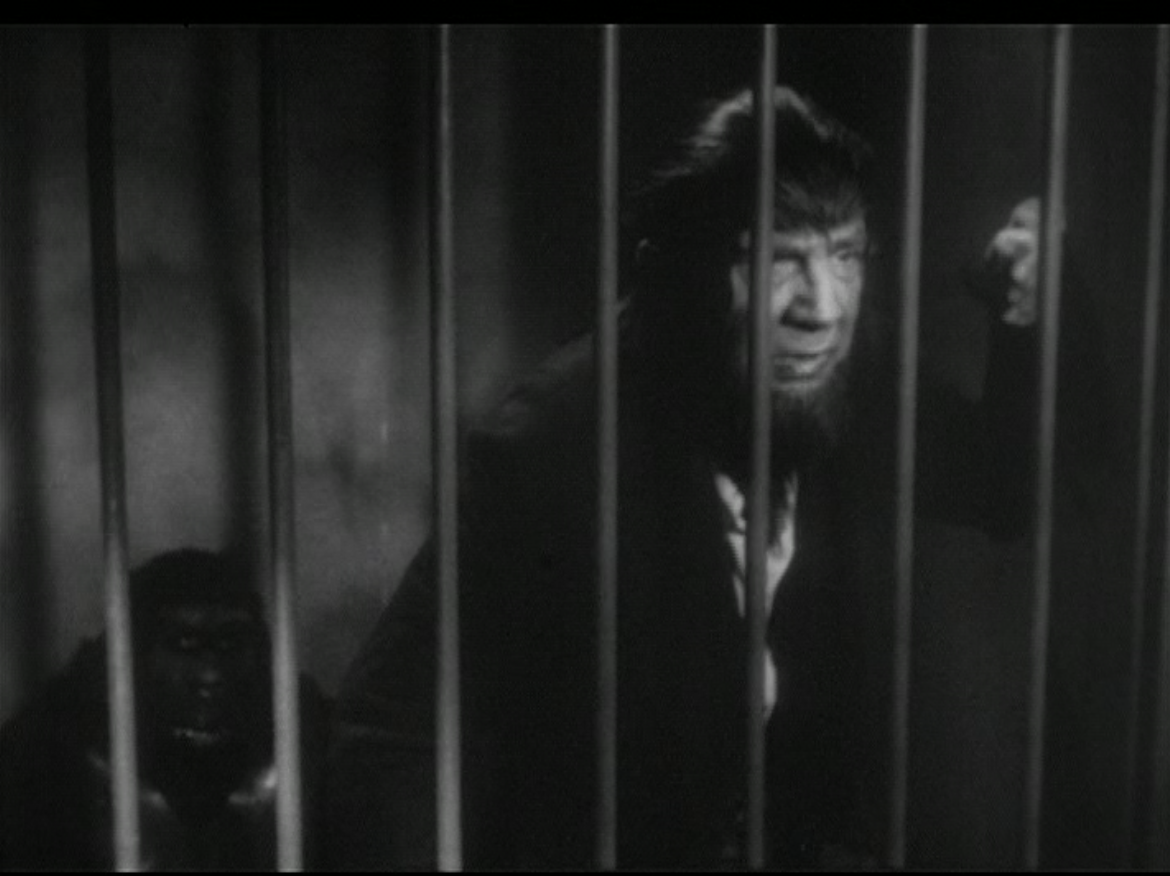Movie Review: The Ape Man (1943) directed by William Beaudine
Jefferson Carter (Wallace Ford), wise-cracking reporter, is waiting at the docks for a ship to come in. A mysterious fellow (Ralph Littlefield) tips him off that one of the people waiting is Dr. George Randall (Henry Hall), who recently reported his research partner Dr. James Brewster (Bela Lugosi) missing. Dr. Randall is there to meet Dr. Brewster’s sister, Agatha Brewster (Minerva Urecal), a noted Spiritualist who was trapped in Europe when the war began. Dr. Randall advises Agatha that her brother is not missing, as such, but before he can go into more detail, Jeff and his fellow reporters try to get an interview with her. Only promising a later appointment gets them to back off.

At the Brewster house, in the secret laboratory, we learn that Dr. Brewster foolishly insisted on being the first to test the scientists’ latest breakthrough. As a result he’s turned himself into an “ape man” with stooped posture, hirsutism, and lowered impulse control. He’s taken to locking himself in a cage with a gorilla (Emil van Horn) when he fears losing control altogether. Dr. Brewster has a hypothesis for a cure for ape man syndrome, but Dr. Randall refuses to cooperate. You see, it would require an injection of fresh human spinal fluid, the harvesting of which would kill the donor.
Meanwhile, Jeff is teamed up with rookie photographer Billie Mason (Louise Currie) to get the interview with Agatha Brewster. Their subject evades the question of strange noises in the house by playing a record of a Scots ghost, but Jeff’s suspicions are aroused, especially when it turns out Billie accidentally caught a blurry image of Dr. Brewster in the background of one of her photos. (They don’t know, of course, that this simian looking image is itself Dr. Brewster.)
Dr. Brewster eventually finds a source for one dose of spinal fluid, and since it’s a fait accompli, Dr. Randall performs the injection, then cuts ties. The injection eases Dr. Brewster’s symptoms, but only for a short time. He’s going to need more spinal fluid, which means many donors. Murder ensues.
Stay tuned for the twist ending involving the mysterious man who’s been popping up throughout the story.
This movie immediately invites comparison to The Ape given they both involve gorillas and spinal fluid. But where Dr. Adrien was a high-minded fellow whose motivations are at heart altruistic, Dr. Brewster is entirely selfish. We don’t learn precisely what his original formula was supposed to accomplish, but it must have been tempting enough to make him want to dose himself. And he seems to show not the slightest qualms about sacrificing other people’s lives to make his own more comfortable, even before he resorts to murder. His lowered inhibitions don’t drive him to murder, they just give him an excuse. Also, the story gives us no chance to know who he was before his transformation.
World War Two is a background event, Billie is hired because Jeff’s previous photographer was drafted, and Jeff himself will be in the Navy in thirty days, so he feels some urgency to wrap up the story. The newspaper people trade banter in the Forties tradition, with Jeff’s sexism getting more prominent as the story progresses. Billie does break one of the photojournalism rules by not bringing her camera along when she breaks into the Brewster place later. True, it wouldn’t have mattered when she was captured, but it’s the thought that counts.
This is very much a low budget flick churned out in a few days because everyone involved needed to eat. As for the writing, the twist ending retroactively changes the tone of the whole story. And not in a good way.
Still, it’s a Bela Lugosi movie, and it’s got some charming bits. It’s short, so maybe a themed double feature with The Ape for buddy movie night?

